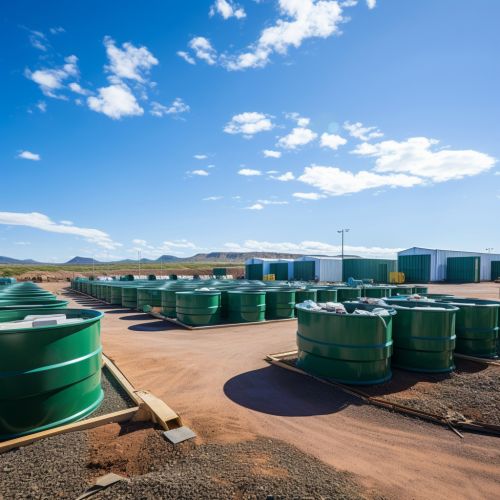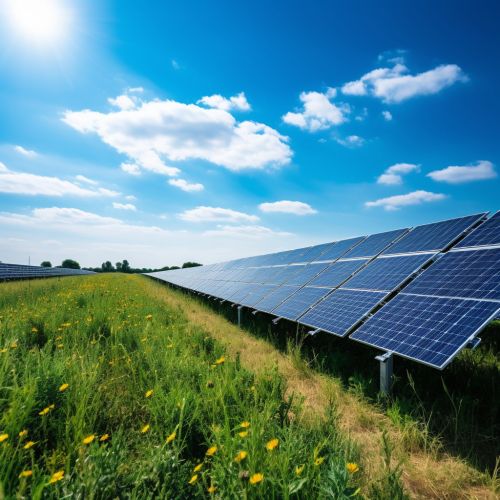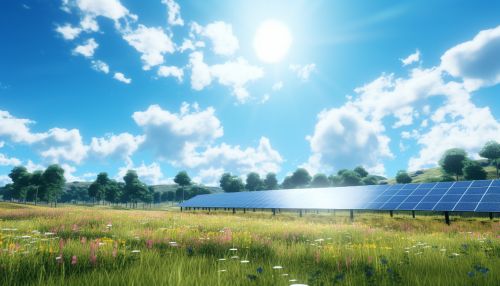Environmental technology
Introduction
Environmental technology, also known as "envirotech", "green technology", or "clean technology", is the application of one or more of environmental sciences, green chemistry, environmental monitoring and electronic devices to monitor, model and conserve the natural environment and resources, and to curb the negative impacts of human involvement. The term is also used to describe sustainable energy generation technologies such as photovoltaics, wind turbines, bioreactors, etc. Sustainable development is the core of environmental technologies. The term is also used to describe a class of electronic devices that can promote sustainable management of resources.


History
The development of environmental technology has been a response to the increasing demand for solutions to environmental problems that we face today. The origins of this field can be traced back to the industrial revolution, when new methods of manufacturing and production led to a significant increase in pollution and environmental degradation. Over the years, environmental technology has evolved to address a wide range of environmental issues, from waste management and water treatment to renewable energy and sustainable agriculture.


Types of Environmental Technology
Environmental technology encompasses a wide range of techniques, processes, and systems designed to mitigate the impact of human activities on the environment. These can be broadly categorized into three main areas: pollution control, resource management, and sustainable energy.
Pollution Control
Pollution control technologies are designed to reduce or eliminate the release of pollutants into the environment. These technologies can be further divided into air, water, and soil pollution control.


Air Pollution Control
Air pollution control technologies include devices and systems used to remove particulate matter and gases from industrial emissions. Examples include electrostatic precipitators, scrubbers, and baghouses.
Water Pollution Control
Water pollution control technologies focus on treating wastewater before it is released into the environment. This includes physical, chemical, and biological treatment processes.
Soil Pollution Control
Soil pollution control technologies involve the use of techniques such as bioremediation and phytoremediation to remove or neutralize pollutants in contaminated soil.
Resource Management
Resource management technologies are designed to promote the efficient use of natural resources. This includes technologies for water conservation, waste management, and sustainable agriculture.


Water Conservation
Water conservation technologies include techniques and devices designed to reduce water use. This can include everything from low-flow showerheads and toilets to advanced irrigation systems.
Waste Management
Waste management technologies focus on the collection, treatment, and disposal of waste. This includes recycling technologies, composting systems, and waste-to-energy plants.
Sustainable Agriculture
Sustainable agriculture technologies are designed to promote the efficient use of resources in farming. This can include precision farming technologies, organic farming methods, and aquaponics systems.
Sustainable Energy
Sustainable energy technologies are designed to generate energy without depleting natural resources or causing significant environmental damage. This includes renewable energy technologies like solar power, wind power, and hydroelectric power.


Benefits and Challenges
While environmental technology offers many benefits, it also presents a number of challenges. The benefits include the potential to reduce pollution, conserve resources, and promote sustainable development. However, the challenges include the high cost of many environmental technologies, the need for regulatory support, and the need for public acceptance and adoption.
Future Trends
The field of environmental technology is constantly evolving, with new technologies and approaches being developed all the time. Some of the key trends in this field include the increasing use of digital technologies, the growing focus on circular economy principles, and the rising interest in nature-based solutions.
